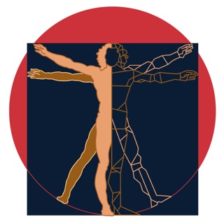Between the late 1980s and early 1990s, language evolution became the subject of focus in archeological circles. Among the most influential articles written on the matter is the article written by archeologists’ Iain Davidson and Pscyhologist William Noble’s entitled “The Archeology of Perception” published in 1989. Davidson and Noble’s paper is considered as the most influential paper during this time because of its explicit theoretical stance.
However another interesting article on the matter which was has equally important implications for archeologist was written by anthropologist, Martin Byers who wrote “Symboling and the Middle-Upper Paleolithic transition” in 1989. While Byer’s thoughts maybe have importance in cognitive archeology, his article is somewhat difficult to understand and I will try my best to dissect what he is trying to say and will try to compare the ideas conveyed in the two articles.
For Davidson and Noble, a symbol is a part of what we know now as language, which is a system of recognizable meanings arising out of a shared and repeated signs. This system of recognizable meaning arose as a result of language being reflective. Reflectivity in language, as defined as the power to talk about what is perceived. Language became reflective because of “mimicry” and “depiction”. Depiction is the deliberate making of various images through gestures by various means in various media. Repetition in the making of this image through gestures results in it being “frozen” and as it persist through time it creates memory and meaning as it is continuously being referenced, copied, transported by the maker and the observers and passed on to the next generation and the next.
Davidson and Noble has hypothesize that the effect of depiction is that “it has transformed communication from a system of context dependent signals” into “a system of reference independent of context, that is a system productive of reflection and hence narrative.”
On the other hand for Byers symbols, are “material items” which are made subject of “material action” having end goal directed intentions, which are ruled governed. He defines “material action” as “symboling behavior” that which he further defines as “intentional behavior subsumed under or governed by a rule.” He gives an example wherein two different stone tools A and B whose design feature allows their use for slicing and cutting same range materials. Both may be the same in form and will accomplish the same thing, but the meaning of the symbol (the material item) is dictated by the material action. While material action (symboling behavior) is dependent on our ability to monitor our monitoring (Reflexivity) the relevant contrast for symboling or non symboling behavior is not the presence or absence of reflexivity but the emergence of what Byer’s call as “effortless reflexivity” from a pre-existing state of effortful reflexivity. This state of “effortful reflexivity” is manifested this way: In our everyday activities we act and react in routine (Practical consciousness) As we do this we take our ways for granted but later on realize that something needs to be change. (Discursive consciousness) Reflexivity is characterized by the ease with which we can shift from “practical consciousness” to “discursive consciousness). This “rule governed” behavior requires “effortless reflexivity.” (And I am really sweating out on this, trying to make sense on what Byer’s is really trying to say, I just hoped he wrote plainly and simply to get his ideas across.)
Both camps agree that reflexivity is necessary to explain the emergence of “symboling behavior” of human beings however both do not agree as to how “reflexivity” came about.
If I understand them correctly, for Davidson and Noble, reflexivity came about because it was learned through mimicry and depiction. In other words the cause is external. Early humans learning from other humans signs and symbols and as time went on imposed meaning on them. (However it is intriguing to ask, where did the first early human learn from? If early humans learned from other humans signs and signs and symbols, the question is where did the humans who the early humans learned from also learned signs and symbols. This question remains unanswered.)
Byers on the other hand believe that while language can be learned, reflexivity cannot. He believes that we can only learn to depict absent objects only if we already have effortless reflexivity. In other words, the cause is internal, within the structures of the minds of early humans taken together with the end goal of behavior among other things this is what he refers to as symboling behavior being “rule governed.” (Perhaps Byers theory that it is “internal” could be the answer the above question I have raised on where were signs and symbols learned from)
Both camps would belong to the “punctuationalist” that is the view that language developed arose recently and rapidly as both has pointed out the Middle- Upper Paleolithic as the period wherein reflexivity first emerged.
 Hi ! my name is Zigfred Diaz. Thanks for visiting my personal blog ! Never miss a post from this blog. Subscribe to my full feeds for free. Click here to subscribe to zdiaz.com by Email
Hi ! my name is Zigfred Diaz. Thanks for visiting my personal blog ! Never miss a post from this blog. Subscribe to my full feeds for free. Click here to subscribe to zdiaz.com by Email
You may also want to visit my other blogs. Click here to learn more about great travel ideas.

Leave a Reply